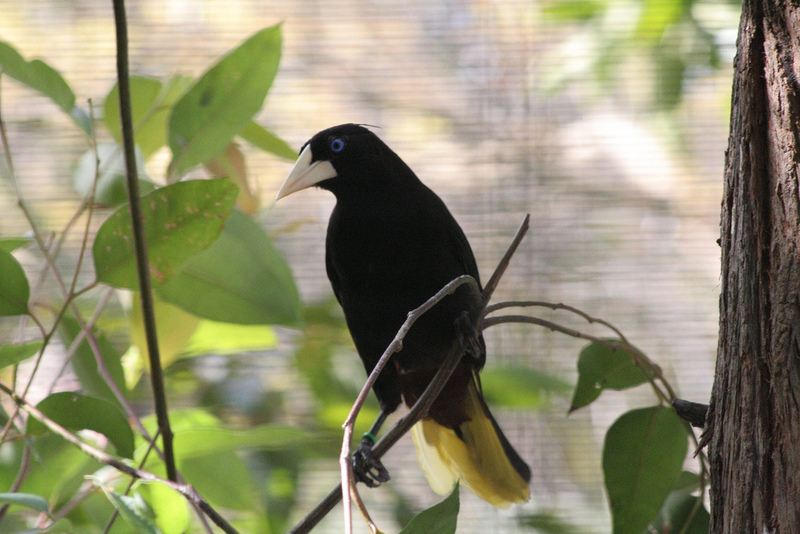|
| Query: cacique | Result: 54th of 60 | |
Crested Oropendola (Psarocolius decumanus) - Wiki
| Subject: | Crested Oropendola (Psarocolius decumanus) - Wiki
| |

| Resolution: 1024x683
File Size: 348189 Bytes
Upload Date: 2007:12:03 21:12:08
|
Crested Oropendola
From Wikipedia, the free encyclopedia
Order: Passeriformes
Family: Icteridae
[Photo] Crested Oropendola (Psarocolius decumanus). Source: Flickr (http://www.flickr.com/photos/chdwckvnstrsslhm/128225806/). Author: http://www.flickr.com/photos/chdwckvnstrsslhm/
The Crested Oropendola, Psarocolius decumanus, is a New World tropical icterid bird. It is a resident breeder in lowland South America east of the Andes, from Panama and Colombia south to northern Argentina, as well as on Trinidad and Tobago. If the genus Gymnostinax for the Montezuma Oropendola and its closest relatives were considered valid, this species would probably belong there too (Price & Lanyon 2002).
It is a common bird, seen alone or in small flocks foraging in trees for large insects, fruit and some nectar. The male is 46 cm long and weighs 300g; the smaller female is 37cm long and weighs 180g.
Adult males are mainly black with a chestnut rump and a tail which is bright yellow apart from two dark central feathers. There is a long narrow crest which is often difficult to see. The iris is blue and the long bill is whitish. Females are similar but smaller, duller, and crestless.
The Crested Oropendola inhabits forest edges and clearings. It is a colonial breeder which builds a hanging woven nest, more than 125 cm long, high in a tree. It lays two blotched blue-grey eggs which hatch in 15-19 days, with another 24-36 days to fledging.
Each colony has a dominant male, which mates with most of the females following an elaborate bowing display. There may be 15-30 females and only 3-4 males. Outside he breeding season, this species is quite mobile, with some seasonal movements.
There are four subspecies:
P. d. insularis of Trinidad and Tobago has much chestnut edging on the feathers of the wings and back.
The nominate subspecies P. d. decumanus occurs from Colombia south to the Amazon in Brazil.
P. d. maculosus breeds south of the Amazon. It is browner, and has yellow feathers scattered through the body plumage.
The northern form P. d. melanterus of Panama and western Colombia is very similar, differing only in the amount of chestnut feather tipping, and is of dubious status.
The distinctive songs of the male include a liquid vibrato CreeeEEEoooooooooo. Both sexes have a loud clack call.
The plumage of the Crested Oropendola has a musty smell due to the oil from the preen gland.
http://en.wikipedia.org/wiki/Crested_Oropendola
| The text in this page is based on the copyrighted Wikipedia article shown in above URL. It is used under the GNU Free Documentation License. You may redistribute it, verbatim or modified, providing that you comply with the terms of the GFDL. |
|
Comments |
|---|
| | Guest |
|
Scientific Name: Psarocolius decumanus (Pallas, 1769)
Common Names: Crested Oropendola
French: Cassique huppé German: Krähenstirnvogel Spanish: Cacique Crestado
Taxonomy: Xanthornus decumanus Pallas, 1769, Suriname. |
^o^
Animal Pictures Archive for smart phones
^o^
|
|
|